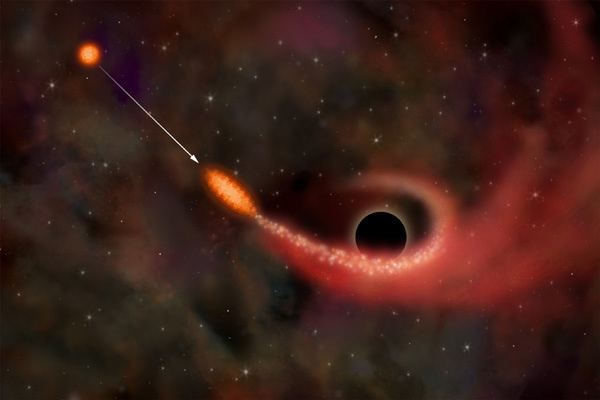Corona Collapsing into a Supermassive Black Hole Captured by NuSTAR
| Paula Marie Navarra | | Aug 13, 2014 11:41 AM EDT |
The Nuclear Spectroscopic Telescope Array (NuSTAR) has captured the corona of a supermassive black hole collapsing into the black hole.
Michael Parker from the Institute of Astronomy in Cambridge said the corona collapsed into the black hole because the intense gravity pulled all the light down on its surrounding disk.
Like Us on Facebook
He explained the gravity of the black hole exerted a stronger tug on the x-rays emitted by it, shifting the corona closer to the black hole.
The result was extreme blurring and stretching of the X-ray light, he said.
According to astronomers, supermassive black holes are thought to reside in the centers of all galaxies. Some black holes are more massive and rotate faster than others.
The black hole named Markarian 335 is located 324 million light years from Earth and is found in the Pegasus constellations.
This black hole squeezes about 10 million times of the mass of the Sun into a region 30 times the diameter, astronomers explained.
It spins so rapidly that space time and time are dragged around with it, they added.
Astronomers still found some light falling into Markarian 335 that was never seen again.
There is also high-energy light that emanates from both the corona and the surrounding accretion disk of superheated material.
They also said the corona still moves in close configuration with Markarian 335, months after it moved.
Astronomers still don't know if the corona will shift back. NuSTAR observations reveal the grip of the black hole's gravity is pulling the corona's light into the inner portion of its superheated disk.
Fiona Harrison from the California Institute of Technology said scientists are still baffled by the creation of the corona and its changing shape.
Harrison said the corona lights up the black hole and allows astronomers to study the regions close to it with the help of NuSTAR.
NuSTAR is a space-based X-ray telescope that uses a Wolter telescope to focus high energy X-rays from astrophysical sources, especially for nuclear spectroscopy.
Its main scientific goals are to conduct a deep survey of black holes a billion times more massive than the sun; to investigate how particles are accelerated to very high energy in active galaxies and to understand how elements are created in the explosions of massive stars by imaging the remains called supernova remnants.
©2015 Chinatopix All rights reserved. Do not reproduce without permission
EDITOR'S PICKS
-

Did the Trump administration just announce plans for a trade war with ‘hostile’ China and Russia?
-

US Senate passes Taiwan travel bill slammed by China
-

As Yan Sihong’s family grieves, here are other Chinese students who went missing abroad. Some have never been found
-

Beijing blasts Western critics who ‘smear China’ with the term sharp power
-

China Envoy Seeks to Defuse Tensions With U.S. as a Trade War Brews
-

Singapore's Deputy PM Provides Bitcoin Vote of Confidence Amid China's Blanket Bans
-

China warns investors over risks in overseas virtual currency trading
-

Chinese government most trustworthy: survey
-

Kashima Antlers On Course For Back-To-Back Titles
MOST POPULAR
LATEST NEWS
Zhou Yongkang: China's Former Security Chief Sentenced to Life in Prison

China's former Chief of the Ministry of Public Security, Zhou Yongkang, has been given a life sentence after he was found guilty of abusing his office, bribery and deliberately ... Full Article
TRENDING STORY

China Pork Prices Expected to Stabilize As The Supplies Recover

Elephone P9000 Smartphone is now on Sale on Amazon India

There's a Big Chance Cliffhangers Won't Still Be Resolved When Grey's Anatomy Season 13 Returns

Supreme Court Ruled on Samsung vs Apple Dispute for Patent Infringement

Microsoft Surface Pro 5 Rumors and Release Date: What is the Latest?










